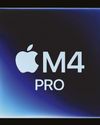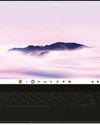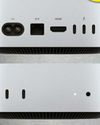
To say Lunar Lake, the codename for Intel’s second-generation Core Ultra processors, is a big deal for Intel understates things in the same way that winning the presidency is a big deal for Donald Trump. For the first time since its foundation in the 1960s, Intel is under existential pressure: its historically low share price means other companies could consider hostile bids; its bold but expensive plan to set up its own foundries in the USA is floundering; and Qualcomm’s partnership with Microsoft to create the first Copilot+ PCs had seen its rival racing off into the distance while Intel was left at the starting line, still lacing up its shoes.
But write Intel off at your peril. It faces stiffer competition than ever, through the AMD-Nvidia axis in the data centre and AMD-Qualcomm in PCs, but this is a company with an unmatched heritage for CPU design. And that heritage shows in the Intel Core Ultra 200V chips.
These processors are designed with a purpose: to deliver performanceper-watt that’s exactly right for thin and light laptops. Unlike AMD with its Ryzen AI 300 series chips (see issue 361, p48), Intel isn’t looking to come out top in all benchmarks here; instead, it wants to deliver battery life that rivals Snapdragon chips and snappy all-round performance that brings a smile to the lips of laptop users.
Power moves
That meant big decisions, the first of which is to drop Hyper-Threading. We’re so used to seeing this in Intel’s CPUs that it almost sounds like heresy – who doesn’t like two threads for the price of one? – but Intel’s designers worked out they could deliver more performance-per-watt by focusing on single-thread efficiency in its all-new Lion Cove P-cores. This doesn’t mean Intel is turning its back on HyperThreading – it still makes sense in chips where power efficiency isn’t the priority – but it is a major change.
This story is from the November 2024 edition of PC Pro.
Start your 7-day Magzter GOLD free trial to access thousands of curated premium stories, and 9,000+ magazines and newspapers.
Already a subscriber ? Sign In
This story is from the November 2024 edition of PC Pro.
Start your 7-day Magzter GOLD free trial to access thousands of curated premium stories, and 9,000+ magazines and newspapers.
Already a subscriber? Sign In

Microsoft makes funeral plans for Windows 10
Extended support tariff and nag screens are ready for the October deadline

Are delivery drones finally ready for take-off?
More than a decade in the making, Amazon is again set to run a trial of its delivery drone in the UK. But there are better uses for delivery drones, explains Nicole Kobie

Sony PlayStation: the game changer
David Crookes looks at how the first PlayStation turned the gaming world on its head, impacting rival console manufacturers, videogame developers and the perception of games themselves

Apple M4 series
Don't expect revolution, but this is a notable all-round upgrade in performance for all members of the series

What is NUI?
Forget cryptic buttons and fiddly menus-Steve Cassidy explores a more intuitive approach to user interactions

Samsung Galaxy Chromebook Plus (2024)
Sleek, stylish and packing a superb OLED panel, this is the best high-end Chromebook since the Pixelbook

How can I make my IT truly sustainable?
It's not just about setting computers to sleep overnight; Nik Rawlinson finds out how to minimise your overall environmental impact

Apple Mac mini M4
Half the size of its predecessor yet packing far more power, this is the biggest Mac upgrade of the year

UPGRADE TO BUSINESSCLASS WI-FI
A HOME OFFICE DESERVES A PROFESSIONAL NETWORK. DARIEN GRAHAM-SMITH MAKES THE SWITCH

GIFTS FOR GEEKS 2024
IN OUR ANNUAL-ROUNDUP OF GIFT IDEAS FOR PEOPLE IMPOSSIBLE TO BUY FOR, WE COVER EVERYTHING FROM CHESS SETS TO PORTABLE BLUETOOTH TURNTABLES